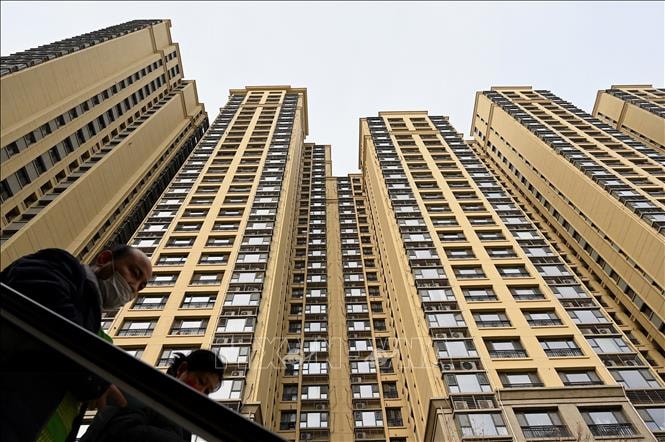In China, the real estate market has a paradox: large inventories, while the demand for affordable housing is not small.

As major changes take place in the supply-demand relationship, the country is taking a people-oriented approach to transform the market, meeting the needs of multiple groups, as a solution to the current crisis.
Efforts to remove demand bottlenecks
The prolonged property crisis, with a surge in unsold apartments, has crippled developers’ cash flows and weighed on home prices, consumer confidence and economic activity. The sector crisis and weak demand have caused China’s economic growth to miss forecasts in the second quarter of 2024.
According to the National Bureau of Statistics (NBS), as of the end of April 2024, the unsold commercial housing stock nationwide was 745.53 million square meters, up sharply from 514.36 million square meters at the end of April 2021. However, only 292.52 million square meters of new homes were sold in the first four months of this year, compared with 503.05 million square meters in the same period three years earlier.
Meanwhile, NBS data shows that home ownership among the 180 million migrant workers in cities is low, and homes with an area of less than 90 square meters still account for the majority of existing housing in the country. Demand for basic housing and home improvement remains strong, mainly due to urbanization and higher quality of life.
At a meeting in late April 2024, policymakers called for measures to reduce property inventories and improve the quality of new homes in a coordinated manner.
Yan Yuejin, director of research at E-house China R&D Institute, said that measures to reduce real estate inventory are China's most groundbreaking policy innovation this year, bringing about a major change in the supply-demand relationship.
As the market stagnates, the government needs to intervene urgently, according to Li Yujia, a researcher at the Guangdong Housing Policy Research Center. The immediate priority is to "release" the large supply of used housing.
China is actively rolling out new measures to reduce real estate inventory, such as promoting home-exchange programs and encouraging local governments and state-owned enterprises to buy commercial real estate (with government support) and convert it into affordable housing, in an effort to revive the property market.
In an effort to support the real estate sector, China announced a 300 billion yuan ($41 billion) lending plan in May 2024. Chinese banks are expected to provide lower-interest loans to state-owned enterprises (SOEs) through a central bank-backed mechanism to buy completed and unsold homes from developers at “reasonable prices” and convert them into affordable housing to meet the needs of low-income families.
Some analysts say the government's new approach to social housing is a rare consumer-oriented move in China, promising to shift resources from local governments to households - seen as a means to boost domestic demand.
However, to boost household spending in the long term, the program to convert unfinished projects into affordable housing needs to be scaled up and other reforms must be implemented.
Moody's Analytics economist Harry Murphy Cruise estimates that affordable housing currently accounts for about 5% of China's total housing inventory. He believes that increasing that to 20-30% would be a big benefit to many Chinese and to household spending at the macro level, but would require 3-4 trillion yuan in financing.
China desperately needs to rebalance its economy, Cruise said. It needs household spending to be a real driver of sustainable growth in the future. Affordable housing is not an immediate solution, but it is certainly a key pillar of this strategy.
Economist Louise Loo at Oxford Economics said families might save less if they felt they didn't have to put aside so much money to buy expensive homes.
Local government involvement
Along with the efforts of the Chinese government, local governments and organizations have quickly stepped in. More than 60 cities have announced support policies to release housing supply, including Shanghai, Shenzhen, Qingdao and Nanjing.
More than 20 housing developers and nearly 10 real estate companies in Shanghai jointly launched a promotional campaign in early May 2024. Under the campaign, homeowners who sign contracts to buy new homes will be given priority by real estate companies to sell their old homes. Once the old home is sold, the new home transaction will be completed. If the old home does not sell, the buyer can get a refund without any legal liability.
In the city of Zhengzhou, an SOE plans to buy homes that have been built for about 20 years to convert into affordable rental housing. The city aims to complete 10,000 deals through this and other approaches this year.
Most cities have surveyed doctors, teachers and other groups, not just low-income ones, to assess demand for rental and home-buying assistance. Economists say cities are implementing new real estate policies in a way that addresses the brain drain and migration to big cities like Shanghai and Shenzhen.
Smaller cities have a greater incentive to develop affordable housing, says Nie Wen, an economist at Hwabao Trust. With cheap rents, these cities can attract more migrant workers and reduce net migration. Affordable housing can also be sold to police officers, doctors, and teachers, helping to retain talent.
Hangzhou, home to tech giant Alibaba Group, announced that the rent for a 50-square-meter apartment will be around 500 yuan per month.